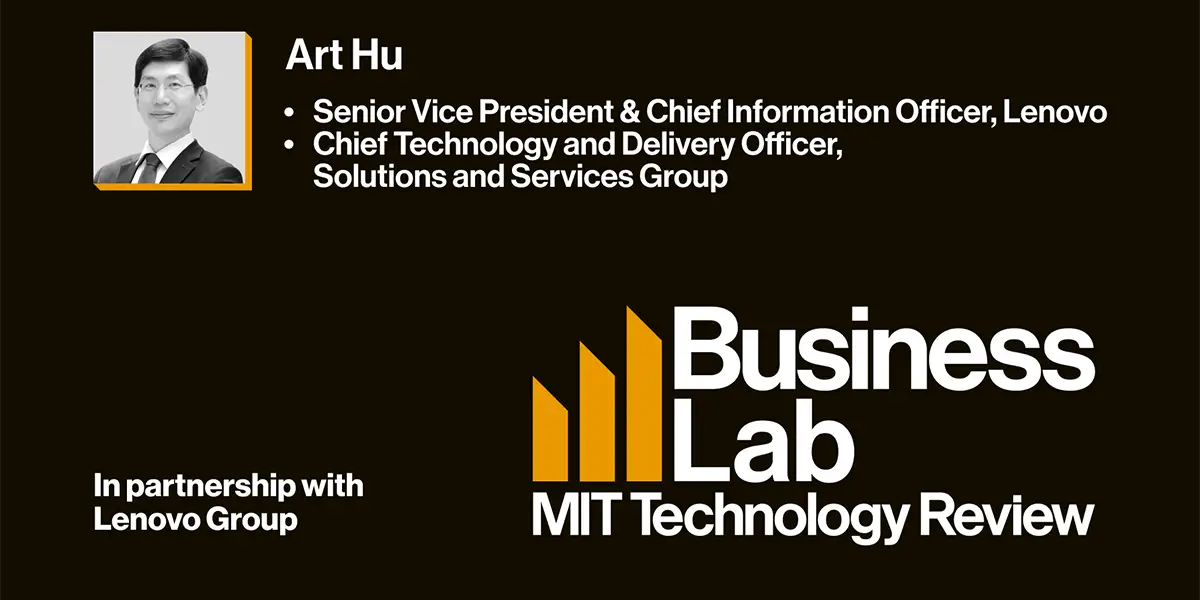And so I think a big part of it as a company, by setting these ambitious goals, it forces us to say if we want to be number one, if we want to be top tier in these areas, if we want to continue to generate results, how do we get there using technology? And so that really forces us to throw away our assumptions because you can’t follow somebody, if you want to be number one you can’t follow someone to become number one. And so we understand that the path to get there, it’s through, of course, technology and the software and the enablement and the investment, but it really is by becoming goal-oriented. And if we look at these examples of how do we create the infrastructure on the technology side to support these ambitious goals, we ourselves have to be ambitious in turn because if we bring a solution that’s also a me too, that’s a copycat, that doesn’t have differentiation, that’s not going to propel us, for example, to be a top 10 supply chain. It just doesn’t pass muster.
So I think at the top level, it starts with the business ambition. And then from there we can organize ourselves at the intersection of the business ambition and the technology trends to have those very rich discussions and being the glue of how do we put together so many moving pieces because we’re constantly scanning the technology landscape for new advancing and emerging technologies that can come in and be a part of achieving that mission. And so that’s how we set it up on the process side. As an example, I think one of the things, and it’s also innovation, but it doesn’t get talked about as much, but for the community out there, I think it’s going to be very relevant is, how do we stay on top of the data sovereignty questions and data localization? There’s a lot of work that needs to go into rethinking what your cloud, private, public, edge, on-premise look like going forward so that we can remain cutting edge and competitive in each of our markets while meeting the increasing guidance that we’re getting from countries and regulatory agencies about data localization and data sovereignty.
And so in our case, as a global company that’s listed in Hong Kong and we operate all around the world, we’ve had to really think deeply about the architecture of our solutions and apply innovation in how we can architect for a longer term growth, but in a world that’s increasingly uncertain. So I think there’s a lot of drivers in some sense, which is our corporate aspirations, our operating environment, which has continued to have a lot of uncertainty, and that really forces us to take a very sharp lens on what cutting edge looks like. And it’s not always the bright and shiny technology. Cutting edge could mean going to the executive committee and saying, Hey, we’re going to face a challenge about compliance. Here’s the innovation we’re bringing about architecture so that we can handle not just the next country or regulatory regime that we have to comply with, but the next 10, the next 50.
Laurel: Well, and to follow up with a bit more of a specific example, how does R&D help improve manufacturing in the software supply chain as well as emerging technologies like artificial intelligence and the industrial metaverse?
Art: Oh, I love this one because this is the perfect example of there’s a lot happening in the technology industry and there’s so much back to the earlier point of applied curiosity and how we can try this. So specifically around artificial intelligence and industrial metaverse, I think those go really well together with what are Lenovo’s natural strengths. Our heritage is as a leading global manufacturer, and now we’re looking to also transition to services-led, but applying AI and technologies like the metaverse to our factories. I think it’s almost easier to talk about the inverse, Laurel, which is if we… Because, and I remember very clearly we’ve mapped this out, there’s no area within the supply chain and manufacturing that is not touched by these areas. If I think about an example, actually, it’s very timely that we’re having this discussion. Lenovo was recognized just a few weeks ago at the World Economic Forum as part of the global lighthouse network on leading manufacturing.
And that’s based very much on applying around AI and metaverse technologies and embedding them into every aspect of what we do about our own supply chain and manufacturing network. And so if I pick a couple of examples on the quality side within the factory, we’ve implemented a combination of digital twin technology around how we can design to cost, design to quality in ways that are much faster than before, where we can prototype in the digital world where it’s faster and lower cost and correcting errors is more upfront and timely. So we are able to much more quickly iterate on our products. We’re able to have better quality. We’ve taken advanced computer vision so that we’re able to identify quality defects earlier on. We’re able to implement technologies around the industrial metaverse so that we can train our factory workers more effectively and better using aspects of AR and VR.
And we’re also able to, one of the really important parts of running an effective manufacturing operation is actually production planning, because there’s so many thousands of parts that are coming in, and I think everyone who’s listening knows how much uncertainty and volatility there have been in supply chains. So how do you take such a multi-thousand dimensional planning problem and optimize that? Those are things where we apply smart production planning models to keep our factories fully running so that we can meet our customer delivery dates. So I don’t want to drone on, but I think literally the answer was: there is no place, if you think about logistics, planning, production, scheduling, shipping, where we didn’t find AI and metaverse use cases that were able to significantly enhance the way we run our operations. And again, we’re doing this internally and that’s why we’re very proud that the World Economic Forum recognized us as a global lighthouse network manufacturing member.
Laurel: It’s certainly important, especially when we’re bringing together computing and IT environments in this increasing complexity. So as businesses continue to transform and accelerate their transformations, how do you build resiliency throughout Lenovo? Because that is certainly another foundational characteristic that is so necessary.
Source link











Leave a Reply